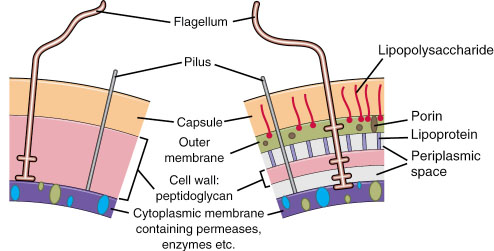

They provide structural support to bacteria.Gram positive and negative cell walls are present in bacteria.What are the Similarities Between Gram Positive and Gram Negative Cell Wall? In grams staining, gram positive cell wall stains in purple colour due to the retention of crystal violet stain. It is multilayered and possesses teichoic acids. This is because it has a thick peptidoglycan layer. Their cell wall is known as gram positive cell wall.

Grams positive bacteria are a category of bacteria. Summary What is the Characteristic of Gram Positive Cell Wall? Side by Side Comparison – Gram Positive vs Gram Negative Cell Wall in Tabular FormĦ. Similarities Between Gram Positive and Gram Negative Cell Wallĥ. What is the Characteristic of Gram Negative Cell WallĤ. What is the Characteristic of Gram Positive Cell Wallģ. Grams’ staining is a technique which categorizes bacteria into two major groups: gram negative bacteria and gram positive bacteria. Features of the cell wall are highly useful when differentiating bacteria.

They have a cell wall surrounding their cell membrane. Another major difference between gram positive and gram negative cell wall is that the gram positive cell wall stains in purple colour in grams staining while grams negative cell wall stains in pink colour.īacteria are tiny microorganisms with a single cell. It is a genus of aerobic gammaproteo bacteria and demonstrates a great deal of metabolic activity.The key difference between gram positive and gram negative cell wall is that the gram positive cell wall has a thick peptidoglycan layer with teichoic acids while gram negative cell wall has a thin peptidoglycan layer surrounded by an outer membrane. This rod-shaped bacterium is responsible for causing urinary tract infections. It colonizes the mucosal surfaces and also includes N meningitides and N gonorrheae. This type of bacteria has a rod-like appearance and is responsible for hemorrhagic penumonia. This type of bacteria has rod-like shape and is responsible for peptic ulcer. It is from the genus of faculatiely anaerobic, non-spore-forming bacteria and can cause urinary tract infections, soft-tissue infections, septic arthritis, CNS infection, osteomyelitis, and more. This small parasitic bacterium is like a virus and is responsible for causing diseases such as psittacosis, trachoma, and non-specific urethritis. They are short rod-like organisms and also include B pertussis, which is an aerobic, pathogenic coccobacillus of the genus Bordetella. This strain of gram positive bacteria includes S pneumonia, s mutants, and s pyogenes. They may cause tuberculosis – M leprae and M tuberculosis are in this genus of bacteria. This genus of bacteria does not have cell wall and are responsible for walking pneumonia. These are fetal pathogens responsible for newborn meningitis. This genus of bacteria helps form vaginal flora. They include vancomycin resistant E (VRE) bacteria that are quite resistant to many antibiotics. They have different strains responsible for causing food poisoning, botulism, gas, gangrene, and tetanus. They are responsible for causing cavities and filamentous respiratory diseases.
CELL WALL GRAM POSITIVE VS GRAM NEGATIVE HOW TO
See also 10 Tips for How to Have Beautiful Feet Gram-Positive Bacteria The following chart will provide you with some information about both gram-positive and gram-negative bacteria. They are responsible for causing different types of infections and ailments. gram negative bacteria, you can find a long list of both types of them. A List of Gram Positive and Gram Negative Bacteria It is due to this particular reason that gram-negative bacteria are a lot more resistant to antibiotics as compared to other types of bacteria with thicker walls. The membrane of gram-negative bacteria is not thick, but it is still nearly impossible to penetrate.Īll in all, gram-positive bacteria have a cell membrane about 20-fold thicker as compared to the protective membrane of gram-negative bacteria. What it implies is that gram positive bacteria have a thick outer covering, which can absorb foreign material with ease. The wall of gram positive bacteria is like a heavy, thick wooden fence, whereas the wall of gram-negative bacteria is more like a thin bulletproof Kevlar vest. Gram-negative bacteria are usually much harder to kill, and here comes more. Their structure tells a lot about how hard it is to kill them. Making a comparison of gram-positive and gram-negative bacteria helps find information about how these bacteria behave. It does not contain techoic acid but lipid content is between 20 and 30%. It comes in contact with plasma membrane at a few loci. The wall has 70-80% murein with low lipid content. The thickness of cell wall is 20-30 nm, and it is smooth. See also 8 Ways of Starving Yourself to Be Skinny - TSMP Medical Blog


 0 kommentar(er)
0 kommentar(er)
